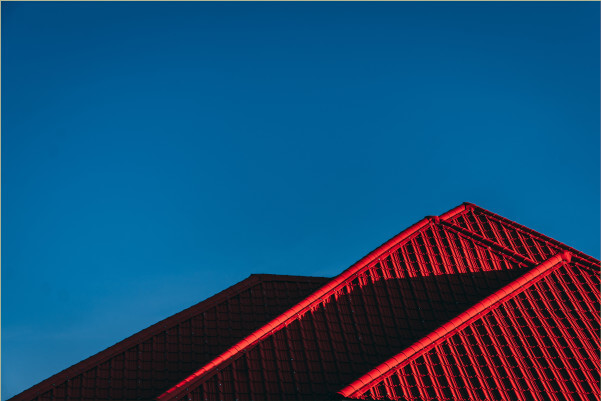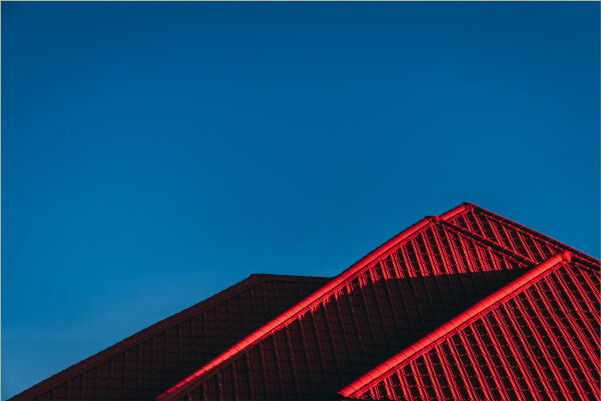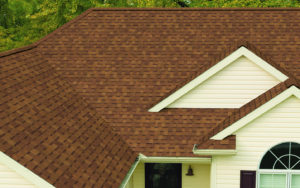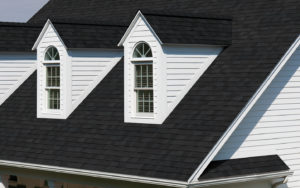The Best Materials for Your Roof

Realizing that you need a new roof can be overwhelming, especially considering the many variables you’ll need to account for. But, of course, one of the most important of these variables is the material you use for your new roof.
If you have already gotten started on research, then you’ve probably realized just how many options there are when it comes to roofing materials. However, some of these materials offer more than others—for instance, certain materials are less durable than others, meaning you’ll need to deal with frequent repairs. You might even need to replace your roof yet again within the next several years. This is an avoidable situation, as long as you choose suitable material (and become familiar with the unique maintenance it requires).
To help you get started, here are examples of solid roofing contenders. Each of these suggestions is a sturdy, durable pick so that your new roof will last for many years to come.
Metal roofing

Over the years, metal roofing has become increasingly common, even among homeowners. And this certainly isn’t for no reason—metal roofing offers a host of benefits, making it one of the best materials available.
Durability and longevity
One of the biggest perks of having a metal roof installed is its durability. Compared to many other roofs, metal roofing tends to last the longest while experiencing the most infrequent damage. In fact, the maintenance required behind a metal roof is minimal, especially compared to other types of roofing.
Assuming that a metal roof is installed correctly by experts, it should last the homeowner anywhere from 40 to 70 years. Some varieties of metal roofing, such as copper, can last even longer. Nevertheless, even your standard metal roof will outlive many other materials.
If you live in a location with extreme weather conditions, a metal roof could be one of your best options. These roofs are highly resistant to the elements, including strong winds—even wind gusts as strong as 140 miles per hour. In addition, while other materials could suffer due to extreme weather, a metal roof is less likely to rust or crack. This is thanks, in part, to the material’s rust proof coating.
Eco-friendliness
If you’re looking to reduce your carbon footprint and live a more environmentally friendly life, then it’s worth considering a metal roof. Unfortunately, some more common roofing materials (like traditional asphalt shingles) are petroleum-based, which means that more fossil fuels need to be used in their creation.
Traditional asphalt shingles also tend to have a shorter lifespan, so alongside being petroleum-based, they will also need to be replaced every 20 years or so—this means that you’ll be going through considerably more fossil fuels than you would if you’d opted for a metal roof.
Most metal roofs are constructed from a large percentage of recycled materials, which is why they’re an eco-friendly option. Further, the metal roof itself is also recyclable. Even if a steel roof is recycled over and over again, the material won’t lose any of its strength.
If you’re looking to install solar panels or begin harvesting rainwater, metal roofing offers the perfect platform to do so.
Energy efficiency
Many homeowners are hesitant to install a metal roof because of the price tag associated with installation. However, this doesn’t mean that a metal roof is more costly than other types of roofing overall—in fact, it’s one of the cheapest options over time.
Most notably, metal roofing is incredibly energy efficient, allowing homeowners to save on heating and cooling. Unlike traditional asphalt roofing, metal roofs don’t absorb heat. If your roof absorbs heat, it will then be transferred into your home. Ultimately, this means that your HVAC system will need to work harder to keep your home at a desirable temperature.
Metal roofs, on the opposite hand, allow your HVAC system to run more efficiently. This is because these roofs reflect heat rather than absorb it. So, while the surface of a metal roof may get hot under direct sunlight, this is simply because the heat isn’t making it past the surface. For instance, after sundown, you’ll notice that a metal roof seems to cool down instantly. A traditional asphalt roof, however, will remain hot to the touch for several hours into the night.
Appearance and customizability
Finally, metal roofs are one of the most stylish options available to homeowners. In part, this is due to the extreme customizability of these roofs—depending upon the style of your house (as well as your taste), metal roofs come in a wide variety of finishes, colors, and shapes. In fact, modern metal roofs typically come in over 100 colors. This is considerably more than traditional asphalt, meaning that a metal roof is more likely to suit the style and appearance of your home.
While standing seam metal roofs are the most popular style, they aren’t your only option. It is also possible for metal roofing to mimic the style of tiles (either clay or slate), wood shakes, or a variety of other designs.
Fiberglass asphalt shingles
Rather than opting for traditional asphalt shingles, it is also possible for homeowners to choose fiberglass asphalt shingles. Although they come with their own pros and cons, many individuals will find them a superior option.
A base mat of woven fiberglass is used to create fiberglass shingles. This base is then covered with a waterproof coating made of asphalt. Finally, fiberglass roofs are topped off by ceramic granules. These granules are intended to protect the roofing system from the harmful effects of UV radiation.
Fiberglass asphalt roofs contain less asphalt than traditional shingles due to the base mat’s composition. More specifically, to achieve the same level of durability as a traditional asphalt roof, fiberglass shingles won’t need to contain as much asphalt. Overall, this means that fiberglass shingles are more eco-friendly than traditional asphalt shingles. As a result, they’re less reliant on fossil fuels. This lower asphalt content also makes fiberglass roofs lighter weight than their more traditional counterparts.
As a whole, fiberglass asphalt shingles are a highly resilient roofing material. They also won’t dry out, won’t change shape over time, and are non-porous.
Owens Corning Oakridge shingles

Owens Corning Oakridge Shingles
One of the two varieties of fiberglass shingles offered by Able Roof, Owens Corning Oakridge Shingles, is one of the top options on the market. These singles are wind resistant, class A fire rated, and resistant to algae buildup. They’re also a highly affordable option, even compared to other types of shingles offered by Able Roof. Despite this, Owens Corning Oakridge Shingles still come with the durability you’d expect from fiberglass shingles.
Owens Corning Durations Series shingles
A slightly more expensive option, Able Roof also installs Owens Corning Durations Series. Like the Oakridge shingles, these are also wind resistant, algae resistant, and come with class A fire protection.
However, the Durations Series comes with the added perk of SureNail Technology. This allows for improved weather protection, thanks to the additional reinforcement.
Roofing from the Durations Series also comes in more colors than the Oakridge variety, making it more stylistically adaptable to a wider variety of homes.
Polymer-modified asphalt
Polymer-modified asphalt, also known as modified asphalt roofing, is another top option when it comes to your new roof.
Traditionally, asphalt shingles are made out of blown asphalt. On the other hand, polymer-modified asphalt is made of a material known as styrene-butadiene-styrene (SBS). This is considered to be a premium shingling option.
Polymer-modified asphalt is considerably more durable than traditional asphalt. In addition, it’s more resistant to impact, making it a superior option for those in areas with extreme weather conditions, such as regular hail.
If you live in a very hot or cold climate, you can expect modified asphalt to hold up without cracking or shrinking.
These premium shingles are also better at withstanding weathering over time. In addition, they provide improved adhesion, meaning that they can better hold onto surface granules. These granules help protect the roof from the sun’s UV radiation, on top of protecting it from weathering.
Owens Corning TruDefinition Duration Flex shingles

Owens Corning TruDefinition Duration Flex Shingles
At Able Roof, we offer Owens Corning TruDefinition Duration Flex Shingles. This is a high-quality variety of polymer-modified shingles.
TruDefinition Duration Flex Shingles are highly durable, backed by SureNail technology. They are also wind resistant, impact resistant, algae resistant, and class A fire rated. Overall, this makes them the superior option if you’re looking to protect your home from harsh weather, such as hail. That’s precisely why Able Roof also refers to this option as our “ThunderGuard” shingles.
Call Able Roof
Are you in Central Ohio and need a new roof? If so, it’s time to get in contact with the experts at Able Roof. We provide our clients with some of the top roofing material options if you’re looking to install a durable roof that lasts for many years to come. In addition, you can learn more about our shingling and other roofing options on our site. Or, you can get in touch with us to receive a free estimate.
The post The Best Materials for Your Roof appeared first on Able Roof.
Did you miss our previous article…
https://metal–roofing.net/?p=140

